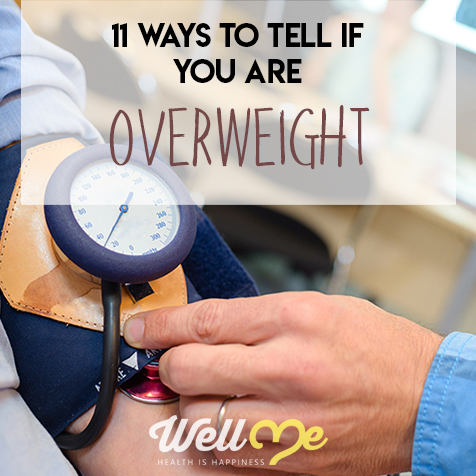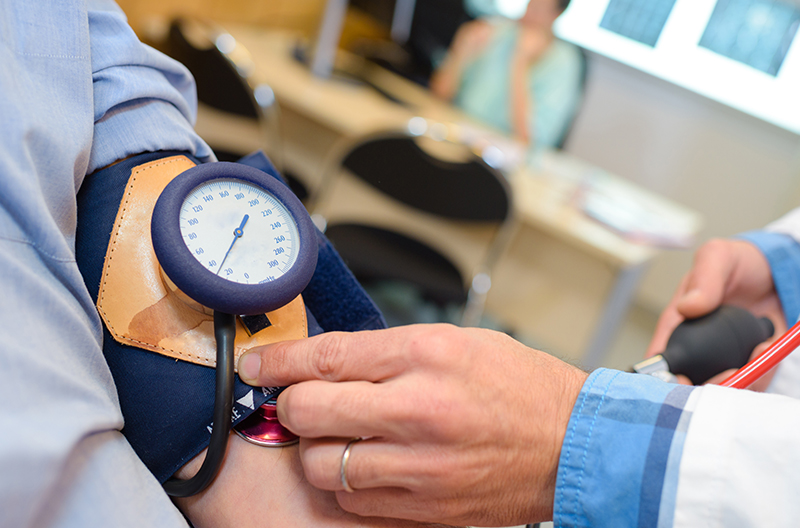When you bend at the waist, are you able to touch your toes?
When you stand up straight and look down, can you see your feet?
When you hold the door open for someone, do they struggle to squeeze past your belly?
If you answered “Yes” to any of these three questions, there’s bad news – you might be overweight or obese. Regardless your lack of flexibility, not being able to reach your toes (or even see them) over the expanse of your abdomen is a bad sign. And if you regularly find yourself getting stuck in doorways, it is an even worse sign.
The body positivity movement is sweeping the nation, but there is a big difference between not being supermodel-thin and being obese. So, how do you know if you’re overweight, obese, or just “big boned”?
In this article, we’ll review the top ten ways to tell if you’re overweight or obese, including common tools and calculations. So, hold onto your love handles, because it’s time to dive in!
Here’s How to Finally Answer, “Am I Overweight? Am I Obese?”
Have you ever wondered, “Am I overweight?” or “Am I obese?” These two questions can certainly be confronting and stressful to ponder. But if you’re worried about your weight, they are definitely worth looking into.
Fortunately, there are many indicators that will help determine if you are overweight or obese. And with your health on the line, it’s important to not just wonder, but to do something about it. Below are ten of the most tell-tale signs that you’re overweight or obese to consider.
Your Body Mass Index (BMI) is Over 25
Think about the last time you visited your doctor – do you remember the colored chart on the wall with all of the numbers and squares? That’s the Body Mass Index (BMI) chart and it is one of the first tools doctors turn to in order to determine if you’re overweight.
But what do those numbers and colors actually tell you?
Your body mass index uses your weight and your height to estimate your body composition. A BMI between 18.5 and 24.9 is considered normal while a BMI under 18.5 is considered underweight (like that would ever apply to you!). The numbers you’re more likely to see are between 25.0 and 29.9 which indicated that you’re overweight or, if you’re over 30, you’re obese.
Your Waist Circumference is Greater than 35 Inches
Okay, so maybe your BMI is a little high – who cares? It’s just a number, right?
Sure, your BMI is one measly little number, but here’s another one – your waist circumference. Take a measuring tape and wrap it around your waist – place it right above your hip bone (if you can feel it under all that pudge). Now, stand up straight and pinch the ends of the tape together then read the number you see.
Is it more than 35 inches? Yes?
Well, there’s more bad news – a waist circumference over 35 inches is another indicator of overweight or obesity! Yay for you.
Your Waist-Hip-Ratio is Over 0.85
Are you still in denial? Well, don’t put that measuring tape away yet – here’s another test you can try!
First, write down that measurement you just took of your waist and then take another measurement, around your hips this time. Make sure you take the first measurement around the smallest part of your waist just above your belly button. For the second measurement, put the tape around the largest part of your hips which is usually the widest part of your buttocks.
Now, divide your waist circumference by your hip circumference. If you’re a woman, you’re looking for a decimal 0.85 or lower – if you’re a man, 1.0 or under is the magic number. If you’re seeing anything higher, it might be time to face the fact that you’re overweight.
Your Body Fat Percentage Too High
Oh, you still don’t believe us? Okay, fine… there’s more.
Head on down to your local gym and ask one of the trainers to take your body fat measurement. He’ll probably grab a pair of calipers (a device used to pinch your fat to determine just how overweight you really are) and ask you to take off your shirt.
Next, he’ll grab your fat on various parts of your body, scribble down a series of numbers, and then give you that look – the look that says, “Why are you even here? I’m surprised you could fit through the door!” Or maybe he’ll just shake his head and send you on your way.
If you want to save yourself some embarrassment, you can buy your own set of calipers and take the measurements at home. You’ll be lucky if you can bend and twist to the angles required to take the measurements accurately, however. But let’s be honest – if you’ve gotten to this point and you still can’t face the facts, what’s one more test going to prove?
Now, let’s talk about some of the other signs that you might be overweight – things that don’t involve measuring your body fat.
Your Blood Pressure is Above the Healthy Range
Though blood pressure is affected by a number of different factors, people who are overweight and obese have a higher risk for hypertension, or high blood pressure.
Blood pressure consists of two numbers – your systolic blood pressure and your diastolic blood pressure. Systolic blood pressure measures the pressure as your heart beats to pump blood throughout your body – this number should ideally be between 90 and 120. Your diastolic pressure is when your heart relaxes between beats and it should be between 60 and 80.
If either of these numbers is below that ideal, you have low blood pressure but let’s be honest – that’s probably not your problem.
More likely, your numbers are higher – much higher. Things start to get dicey between 120 and 140 systolic and 80 to 90 diastolic. You’ve entered the realm of hypertension when you hit 140 to 190 systolic and 90 to 100 diastolic and your doctor probably isn’t happy about it.
Your Cholesterol is Higher Than 130
Okay, so your blood pressure is a little high, but that’s probably just because of your genetics, right? Yeah, right… Let’s try something else, your cholesterol.
A simple blood test will tell you your cholesterol levels for total cholesterol, LDL cholesterol, and HDL. Low-density lipoprotein (or LDL) is the bad cholesterol that clogs your arteries and sets you on the path to a heart attack while high-density lipoprotein (HDL) is the good kind.
If your LDL cholesterol is over 130, it’s not good – if it’s above 160, it’s pretty bad. If it’s over 190, you should probably just call the ambulance now. It’s also a bad sign if your total cholesterol is over 200 and your HDL is below 40.
You Have Trouble with Physical Exertion
Tired of all these tests? Okay, well there are a few other signs that you could be overweight.
Take a quick walk around the block or, better yet, climb a set of stairs. Now, how do you feel? If you’re huffing and puffing after such mild physical exertion, you’re probably carrying around some extra weight. You can be within the healthy weight range and still have awful cardiovascular fitness, but that’s probably not your issue.
You Feel Tired All the Time
Here’s another question to ask yourself – do you feel tired all the time?
Carrying around all that blubber can be very tiring! But it’s not just that. Excess body fat can trigger internal inflammation that can put your body in a perpetual state of fatigue. That’s why seemingly simple things like taking a walk or climbing a set of stairs can be so exhausting.
You Have Pain in Your Knees, Hips, and Back
Not only is being fat tiring, but it can also be painful!
All of that extra weight puts excess strain on your bones and joints which can lead to chronic knee, hip, and back pain. In fact, it can actually wear down the tissue protecting your joints and lead to serious damage as well as early arthritis.
If you’re still not ready to admit it, here’s one final indicator that you’re overweight:
You’ve Consistently Gained Weight Every Year Since You Can Remember
Grab your high school graduation photo and then compare it to the image you see in the mirror. Does your current self look like you ate your high school self? If you’ve consistently gained weight – even if it’s just a few pounds – every year for as long as you can remember, you’re probably overweight. You may not have noticed the weight gain because it often happens slowly, but if you’re honest with yourself you may need to admit that something is wrong.
What Should You Do Now?
The first thing you need to do is take a deep breath, there is no reason to panic! Getting all worked up won’t do you any good and with all that extra weight you’re carrying, it probably isn’t good for your heart either! So, what do you do?
After taking a deep breath, ask yourself if you’re really ready to change. Losing weight shouldn’t be about trying to look better in the mirror – it should be a serious commitment you make to yourself for the sake of your health and longevity. If you can’t commit to making the necessary changes in your life, you’re just going to fail time and time again. Healthy and sustainable weight loss is achieved over months or years, not days or weeks.

Conclusion
Losing weight is not some insurmountable task, but it does require a certain degree of motivation and a heck of a lot of work. If you’re up to the challenge, good for you! Take the time to learn how to do it right so you don’t end up damaging your body further and so you can actually keep the weight off for good. Best of luck!








